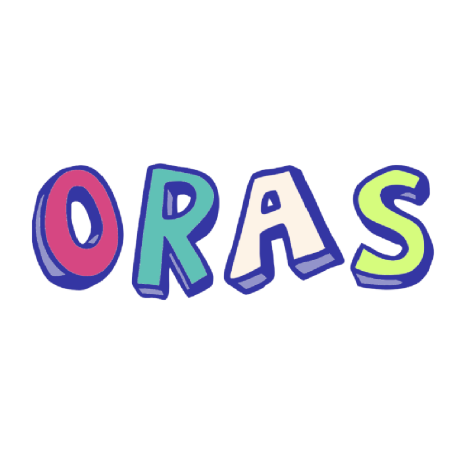Announcing ORAS v1.2.0 - OCI Spec v1.1.0 support, formatted output, and more!
The ORAS project maintainers are proud to announce ORAS CLI v1.2.0 and ORAS-go v2.5.0. These two releases are ready for production use. ORAS CLI v1.2.0 introduces OCI Spec v1.1.0 support, formatted output, brand-new terminal experience with progress bar, and more! This article walks you through the notable features and how these enhancements benefit ORAS users as well as the cloud-native ecosystem.
What's new in ORAS v1.2.0
OCI Spec v1.1.0 support
ORAS CLI v1.2.0 and ORAS-go v2.5.0 are now compliant with OCI image-spec v1.1.0 and distribution-spec v1.1.0. With OCI Spec v1.1.0 implemented by more and more OCI registries and officially supported in the ORAS client side, these major capabilities are officially enabled for users:
- Able to create, store, and distribute non-container artifacts, such as Helm Chart, Kubernetes manifest file, See OCI Artifact concept for details.
- Able to establish relationships between different artifacts. This allows users to associate the supply chain artifacts like SBOM, signature, vulnerability scanning report with the image. See The Art of Associating Artifacts for details.
- Able to discover and query artifact relationships, able to distribute a graph of artifacts across registries. See Listing Referrers concept for details.
Formatted output
ORAS CLI has very basic output to show command operation result to human. For machine processing, especially in automation scenarios like scripting and CI/CD pipelines, developers may want to perform batch operations and chain different commands with ORAS, as well as filtering, modifying, and sorting objects based on the ORAS outputs. Developers expect that ORAS output can be emitted as machine-readable text, so that it can be used to perform further data manipulation.
With formatted output support in ORAS v1.2.0, it enables users to use the --format to format metadata output into structured data (e.g. JSON) and optionally use the --template with the Go template to manipulate the output data.
For example, push a file and two tags to a repository and show the descriptor of the image manifest in pretty JSON format:
oras push $REGISTRY/$REPO:$TAG1,$TAG2 sbom.spdx vul-scan.json --format json
{
"reference": "$REGISTRY/$REPO@sha256:4a5b8c83d153f52afdfcb422db56c2349aae3bd5ecf8338a58353b5eb6681c45",
"mediaType": "application/vnd.oci.image.manifest.v1+json",
"digest": "sha256:4a5b8c83d153f52afdfcb422db56c2349aae3bd5ecf8338a58353b5eb6681c45",
"size": 820,
"annotations": {
"org.opencontainers.image.created": "2023-12-15T09:41:54Z"
},
"artifactType": "json/example",
"referenceByTags": [
"$REGISTRY/$REPO:$TAG1",
"$REGISTRY/$REPO:$TAG2"
]
}
Futhermore, if you want to filter out the value of reference and media type of the pushed artifact in the standard output, use Go template functions as follows:
oras push $REGISTRY/$REPO:$TAG1,$TAG2 sbom.spdx vul-scan.json --format go-template='{{.reference}}, {{.mediaType}}'
$REGISTRY/$REPO@sha256:4a5b8c83d153f52afdfcb422db56c2349aae3bd5ecf8338a58353b5eb6681c45, application/vnd.oci.image.manifest.v1+json
This feature is still in "Experimental" stage. We welcome feedback and contributions to make this feature more mature.
Progress output to show real-time status
Keeping track of manifest content download and upload has never been more intuitive and informative. With the progress output, users can witness the real-time status of manifest content pulling, pushing, and transferring. This is really helpful and effective when pulling or pushing large-size content from or to the registry.
Other enhancements
- Support X.509 mTLS authentication with OCI registries by introducing
--cert-fileand--key-filein several ORAS commands - Support deletion of manifests and blobs in OCI image layout
- Introduce
--platformto oras attach for better multi-arch attaching experience, which allows adding referrer artifact to a specific sub-platform - Introduce
oras resolveto get the digest of an artifact
In addition, the overall user experience and performance are also enhanced in this release:
- Reduce authentication request count for several ORAS commands and support blob mounting across repositories in the same registry for
oras copy - Improve error message based on ORAS CLI error handling guidance
There are a few bug fixes and a deprecated feature in this release. For a concrete changelog, please see ORAS CLI v1.2.0 Release Notes.
Use ORAS CLI in terminal, Docker container and CI/CD pipelines
ORAS installation binary is available on Winget, Homebrew, Snap, GitHub and Docker container image. It can be installed via one simple command. Please see the installation guide for your environment.
The ORAS GitHub Actions has been upgraded to ORAS CLI v1.2.0. ORAS CLI has also been integrated with the hosted runner machines (Ubuntu 22.04 and Ubuntu 20.04) on GitHub Actions and Azure Devops as a preinstalled software. This delivers out-of-box experience to use ORAS in CI/CD pipelines.
What's next for ORAS
ORAS CLI v1.3.0 will focus on verbose logs improvement for a better troubleshooting experience, image index for multi-arch image management, and annotating experience improvement. See the ORAS v1.3.0 milestone for details. Any feedback are welcome!
Join the ORAS community
- Follow ORAS on X
- Join the Slack channel in CNCF and find us at oras channel






